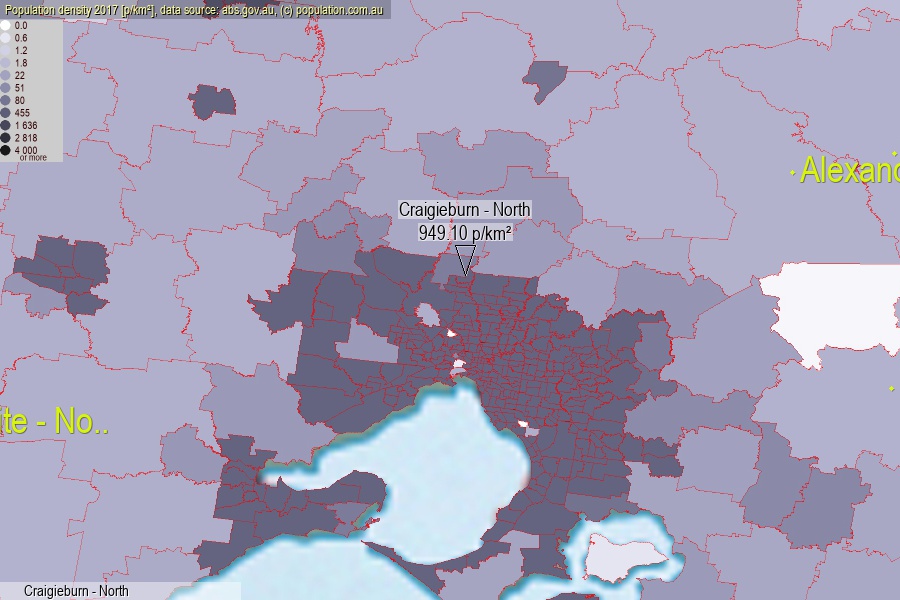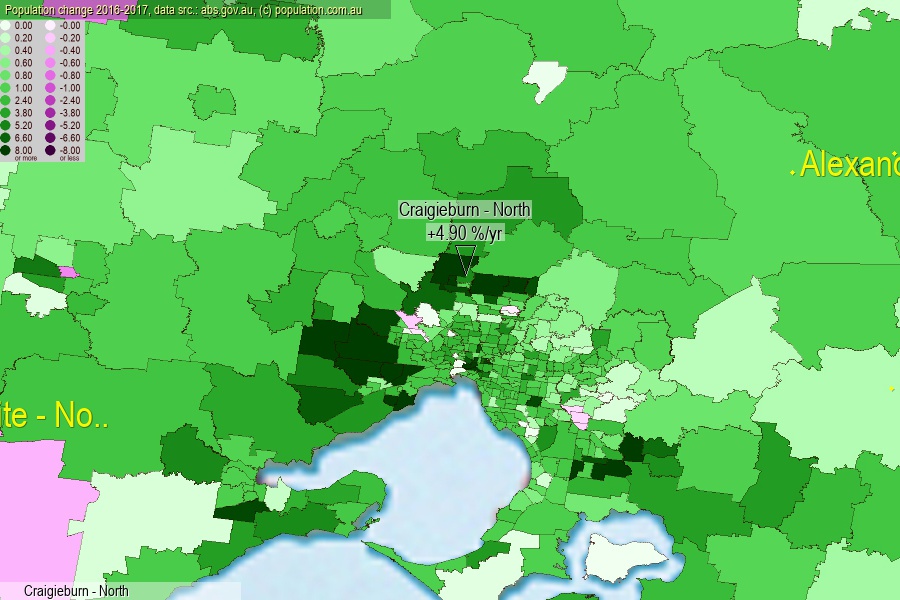 population.com.au
population.com.auLast official estimated population of Craigieburn - North (as Statistical Area Level 2) was 12 718 people (on 2017-06-30)[2]. This was 0.05% of total Australian population and 0.198% of VIC population. Area of Craigieburn - North is 13.40 km², in this year population density was 949.10 p/km² . If population growth rate would be same as in period 2016-2017 (+4.9%/yr), Craigieburn - North population in 2025 would be 18 647. [0]



Click to enlarge. Craigieburn - North is located in the center of the images.
Population [people], population density [p./km²] and population change [%/year] [2]
View borders » (new window) [4]
[2001-2002] +313.33 %/Yr.
[2002-2003] +117.54 %/Yr.
[2003-2004] +47.45 %/Yr.
[2004-2005] +44.06 %/Yr.
[2005-2006] +48.52 %/Yr.
[2006-2007] +39.51 %/Yr.
[2007-2008] +22.83 %/Yr.
[2008-2009] +20.33 %/Yr.
[2009-2010] +10.07 %/Yr.
[2010-2011] +9.75 %/Yr.
[2011-2012] +8.77 %/Yr.
[2012-2013] +9.45 %/Yr.
[2013-2014] +7.96 %/Yr.
[2014-2015] +5.68 %/Yr.
[2015-2016] +5.26 %/Yr.
[2016-2017] +4.90 %/Yr.
[0] Calculated with linear interpolation from officially estimated population
[1] Read more about SA2 and Australian Statistical Geography Standard (ASGS) on abs.gov.au
[2] Population data from Australian Bureau of Statistics (Population and density: 2017; change: 2016-2017)
[3] Digital Boundaries: Australian Statistical Geography Standard (ASGS) 2016.
[4] Border coordinates are simplifyed using Ramer-Douglas-Peucker algorithm.